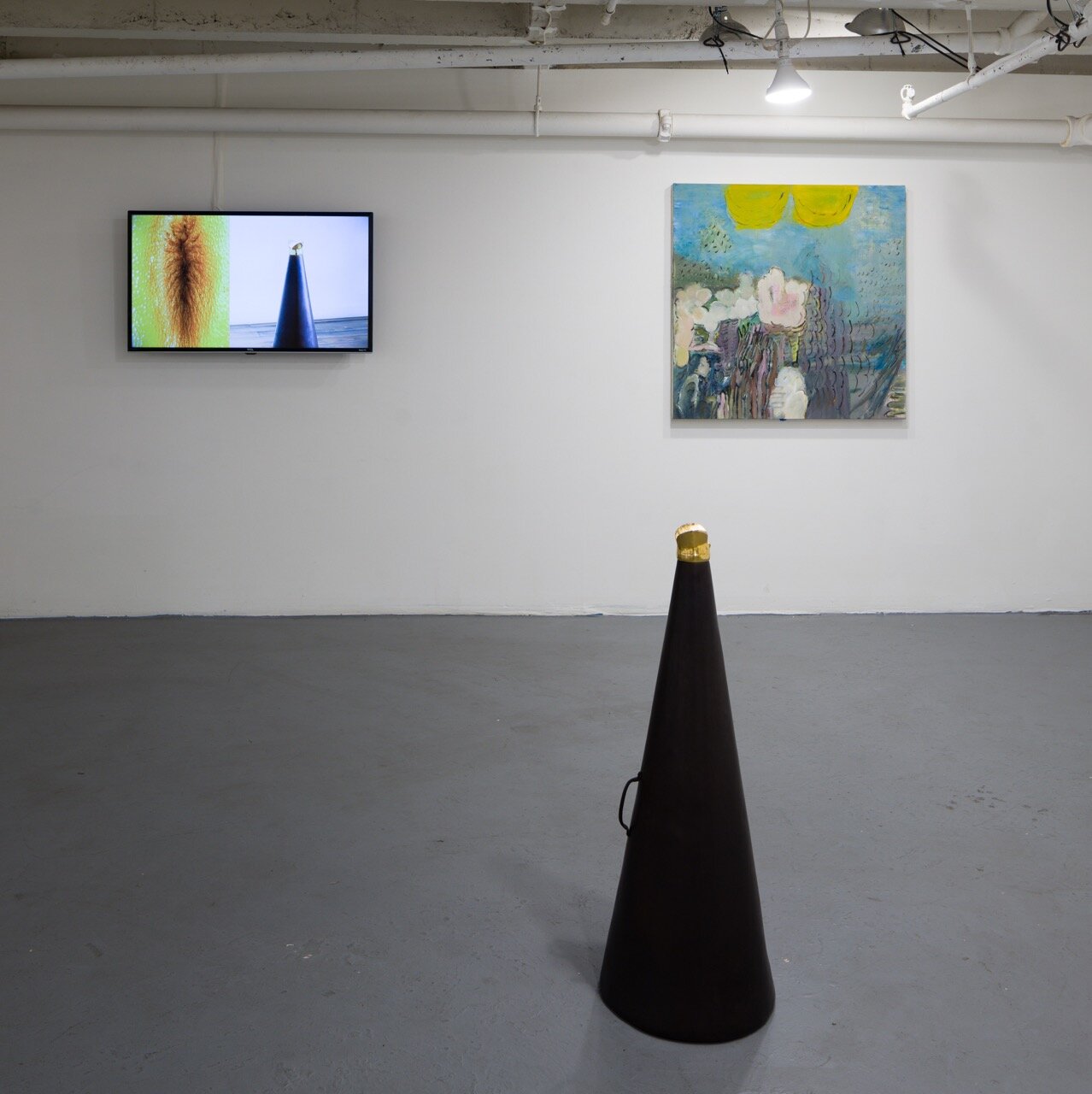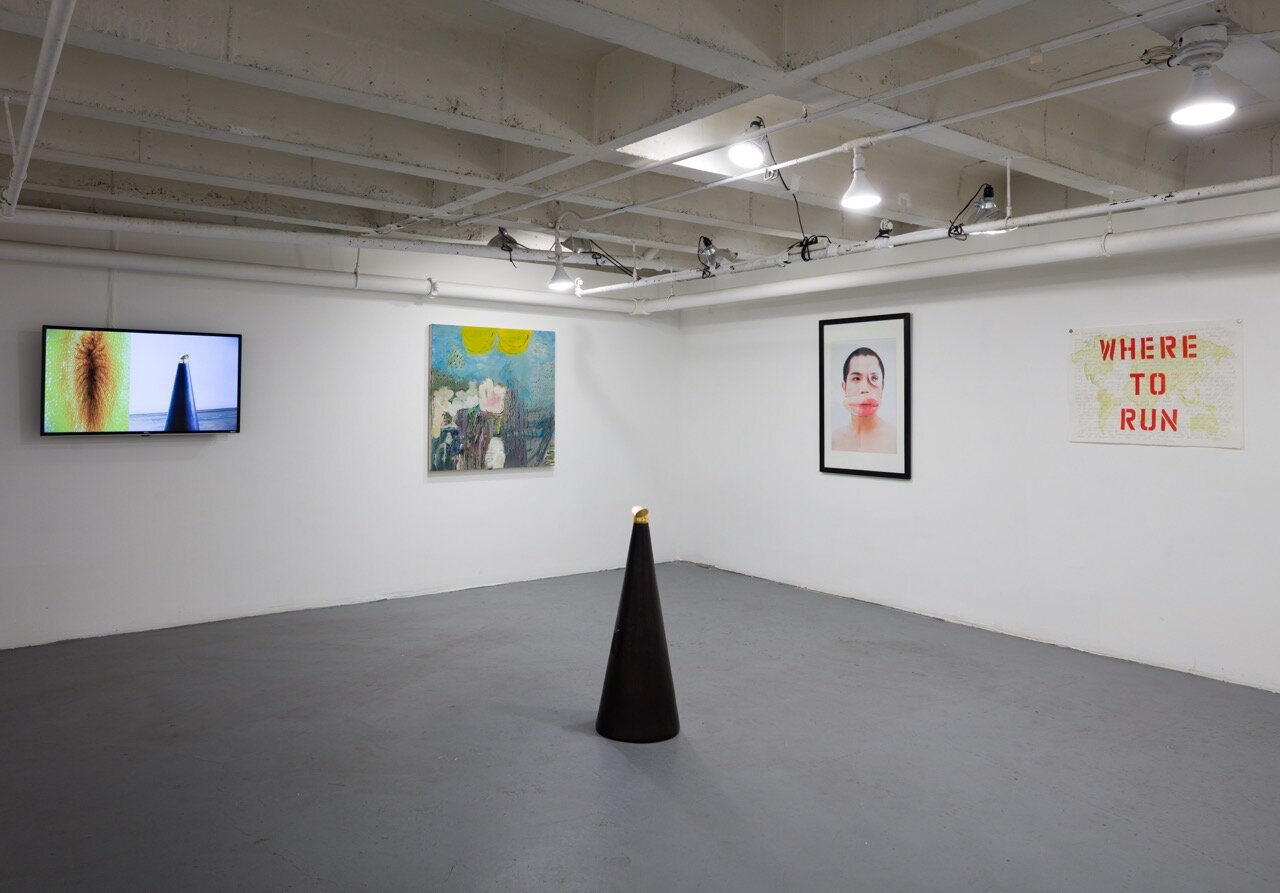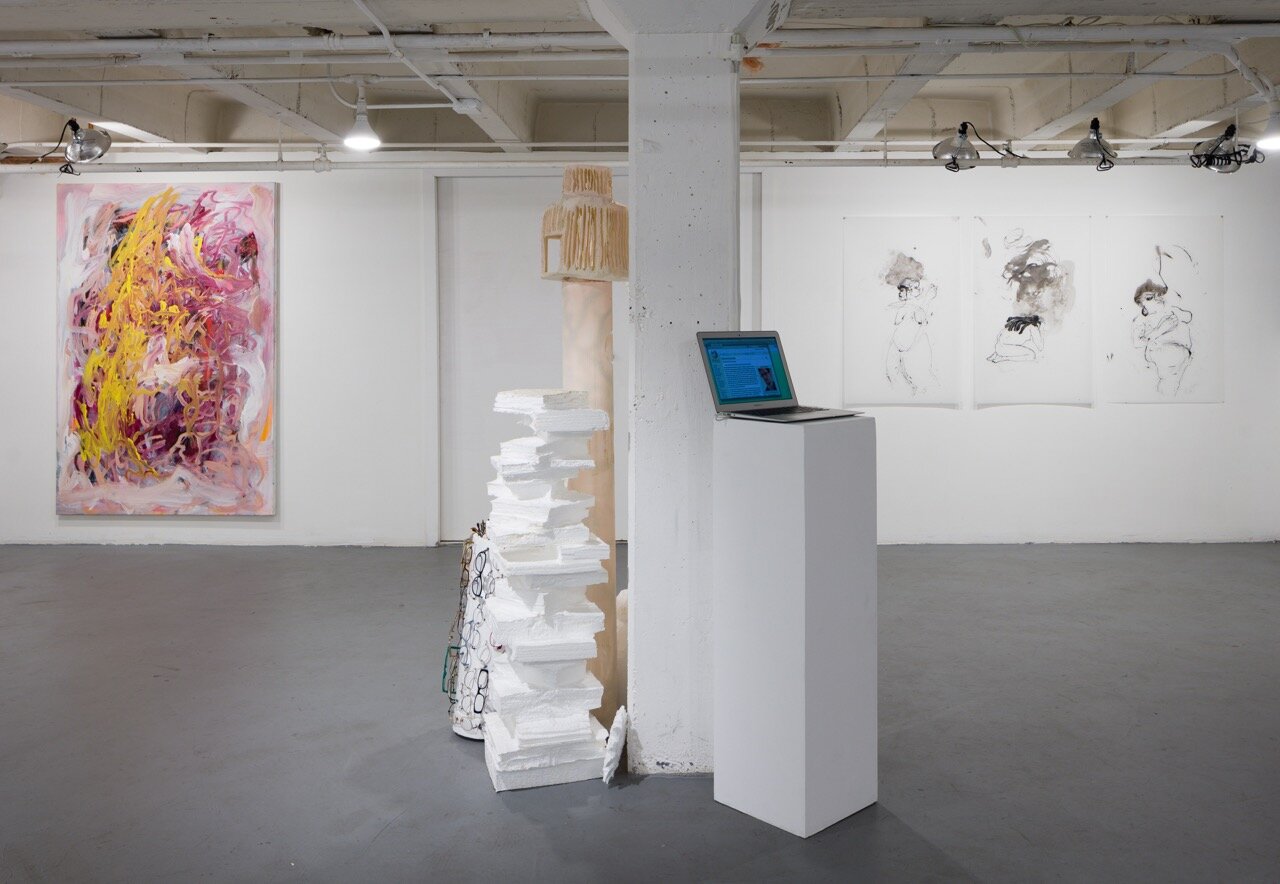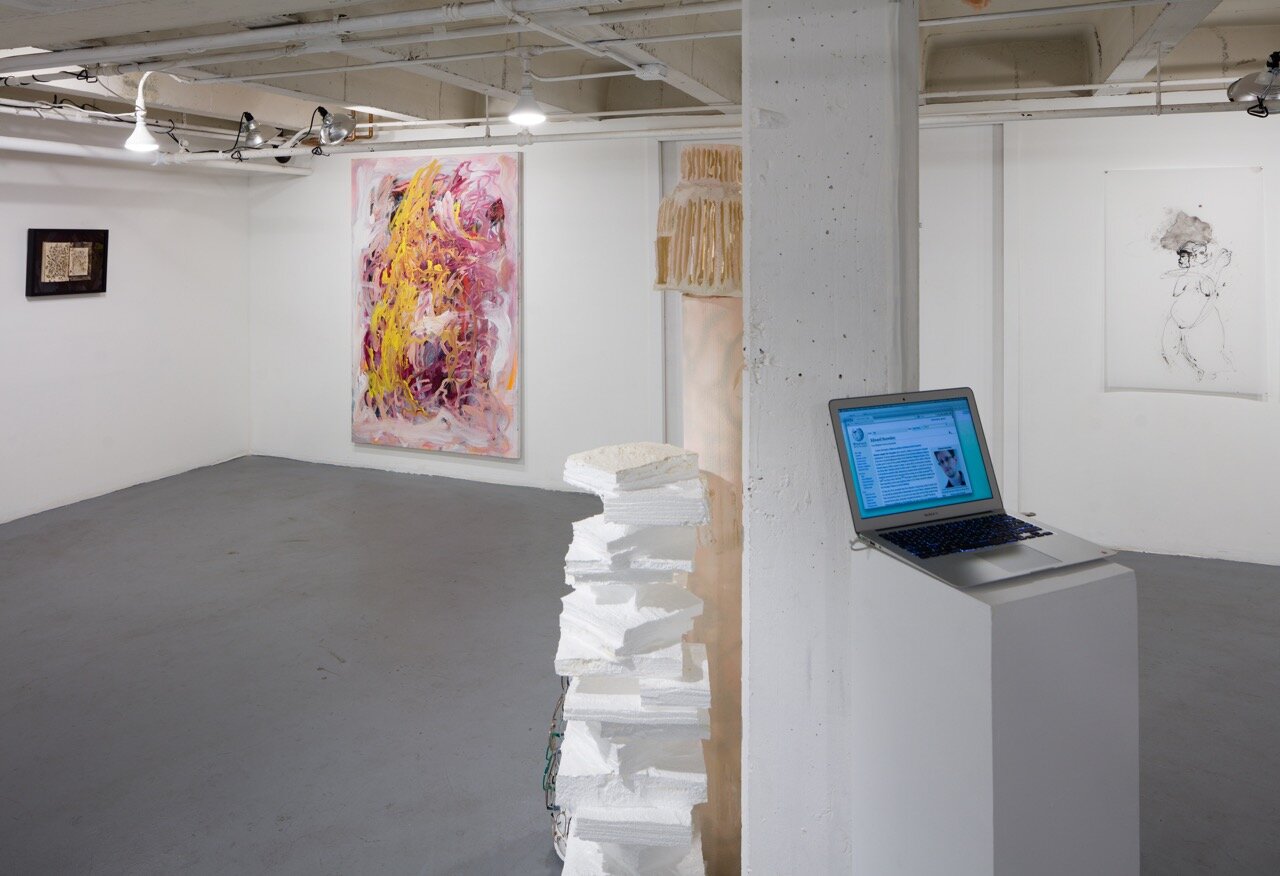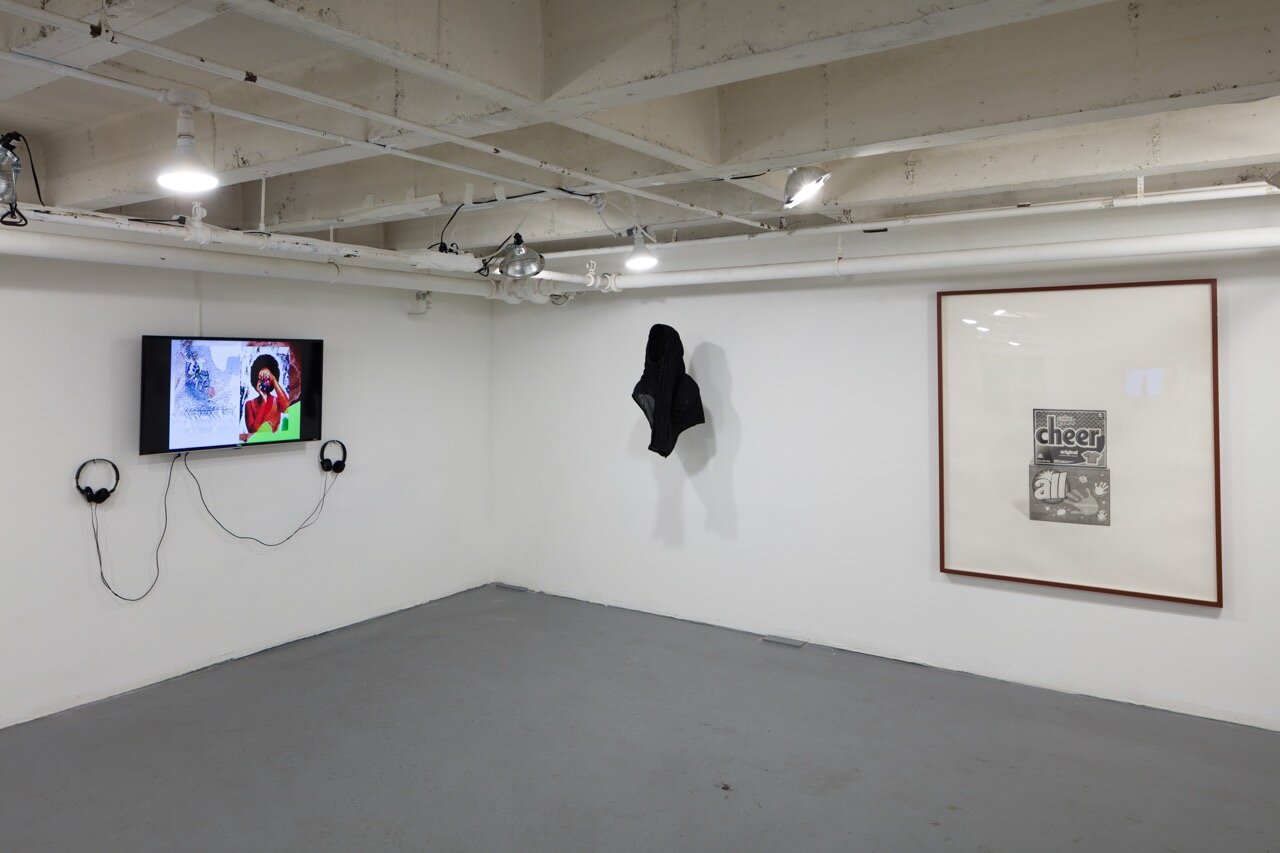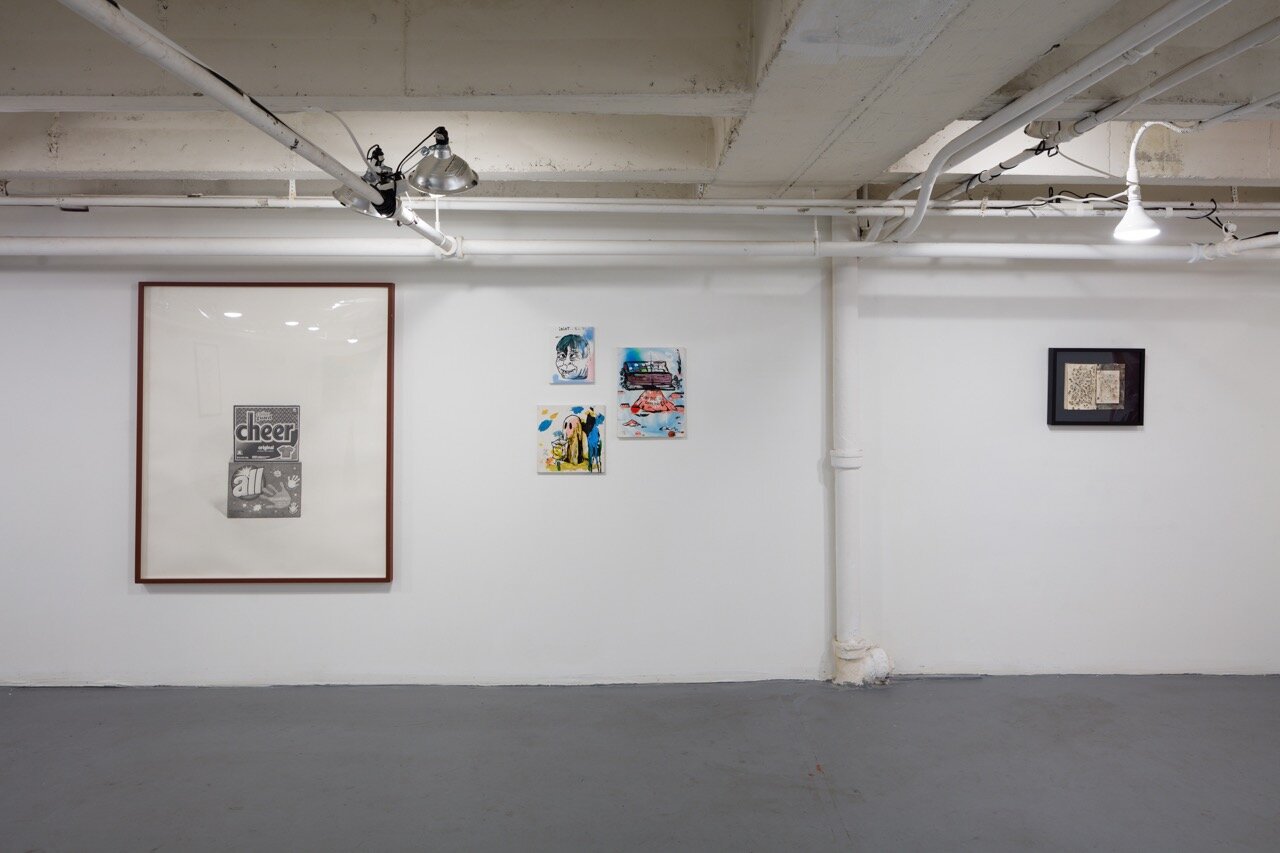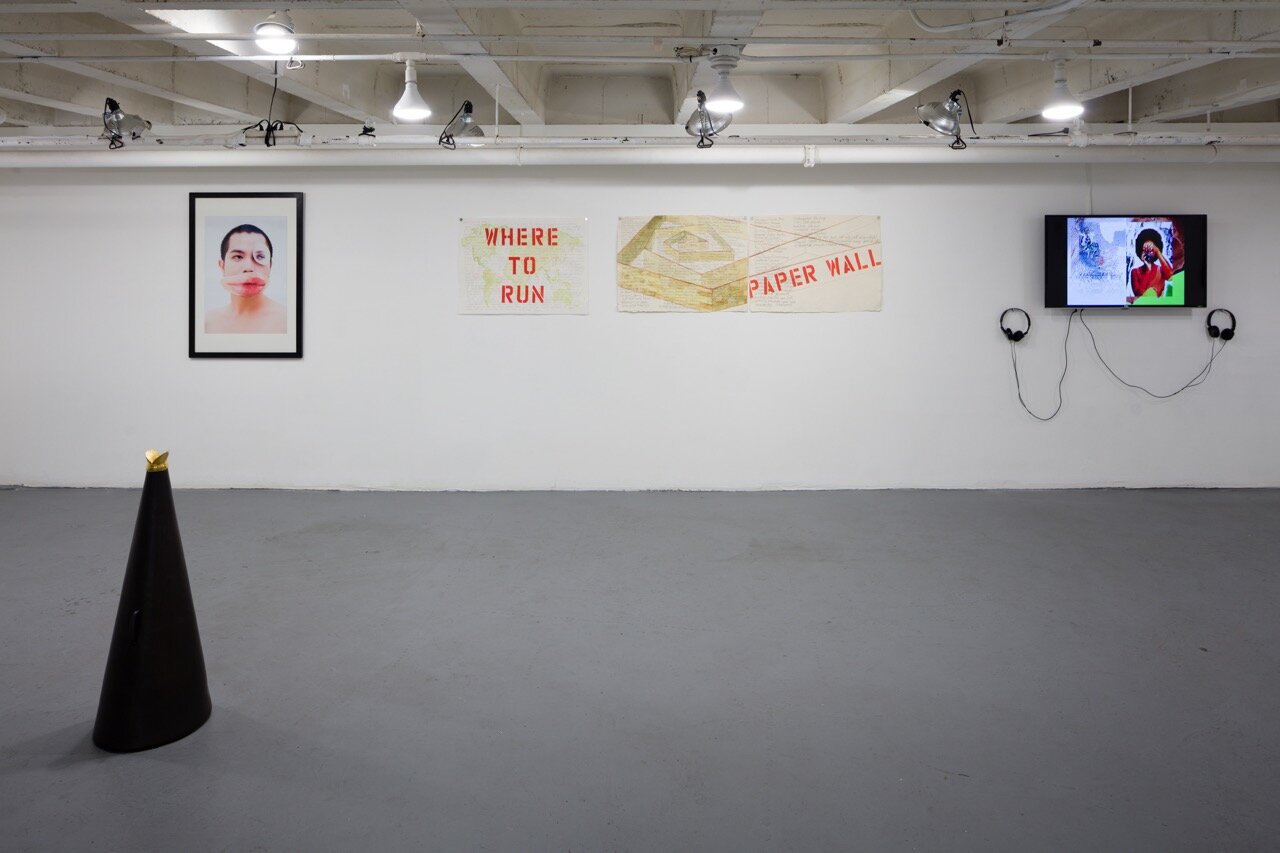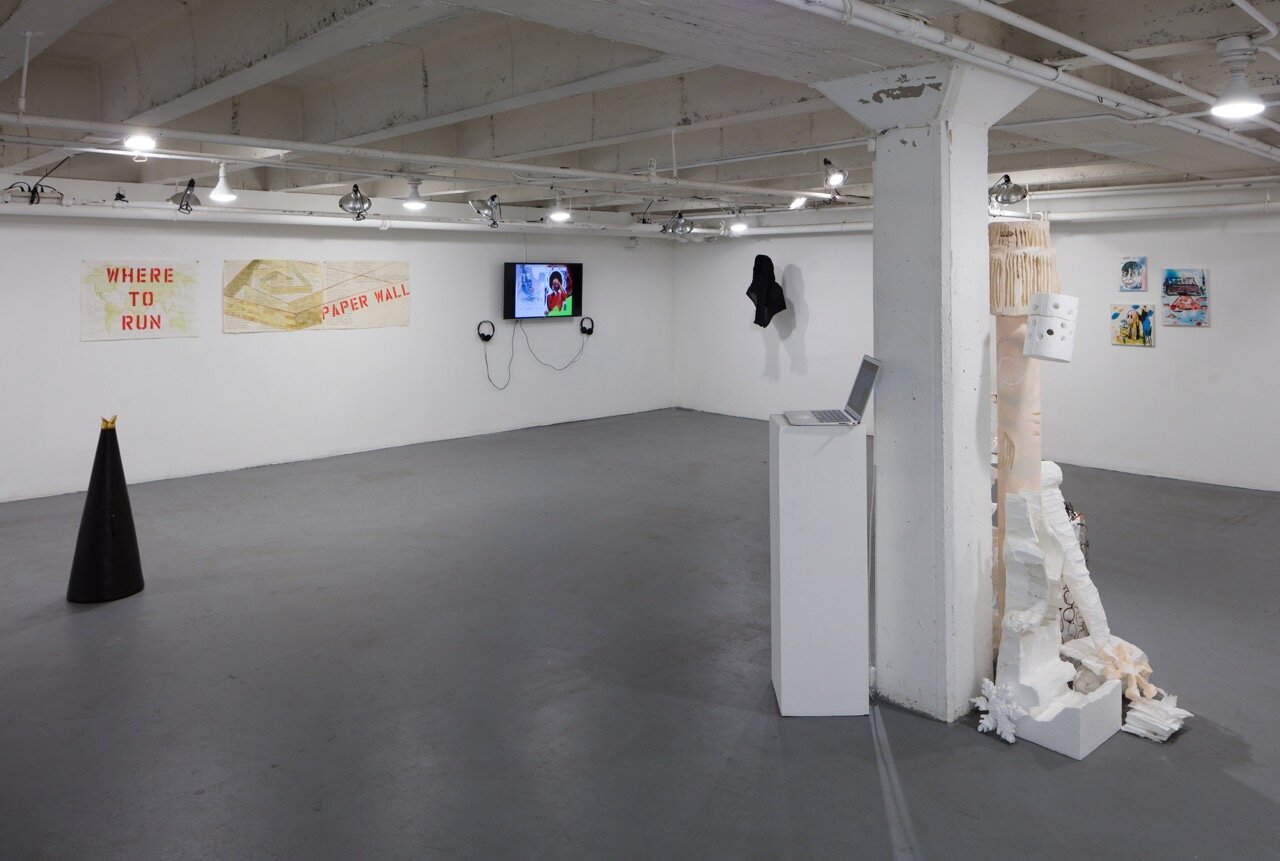Black Mirror
Charlie James Gallery is pleased to present Black Mirror, a group exhibition curated by Julia Schwartz, with works by Andrea Marie Breiling, Dani Dodge, Kio Griffith, Karl Haendel, Kenyatta AC Hinkle, Cole M James, Elana Mann, Abdul Mazid, Thinh Nguyen, Warren Neidich, Claudia Parducci, Julia Schwartz, and Thaddeus Strode.
In Black Mirror, 13 artists respond to the current political and cultural moment through painting, drawing, installation, photography, and video. The works in this exhibition contend with what it means to live in the age of Trump, Wikileaks, and border walls; an age when the term BlackLivesMatter holds urgent currency, women’s bodies are once again up for grabs and whole segments of the population are obliged to live in a state of erasure. The artists employ disparate approaches in their responses to this historical moment: subversive humor and wit, practical guidance, documentation and conceptual analysis, poignant abstraction, emotional release.
The title, Black Mirror, is taken from the dystopian TV show, which examines the dangerous capacities of technology and social media to shape our thoughts and control our behaviors. Black Mirror refers as well to Claude Glass, small mirrors used by artists that abstract and distort the reflected subject.
Dani Dodge is a former journalist previously embedded with the Marines in Iraq. She creates environments out of recycled domestic detritus that mirror our emotional experience.
Thinh Nguyen, a first-generation immigrant from Viet Nam, uses his body and his being as a canvas for endurance actions and performance to explore and expose aspects of race and racism, class and classism, gender and identity.
Karl Haendel appropriates and recontextualizes images and texts, transforming them into his own symbolic language through drawing. Haendel, who also makes videos, books, and public projects, often creates immersive installations that rethink the role images play in determining our understanding of gender, power, and emotional states.
Abdul Mazid, a first generation American of Syrian and Mexican decent, mines his experience growing up in America as well as his study of economics for source material, to explore complexities of identity.
The work of Cole M James articulates the trajectory of her experiences as a Queer African American Woman. Her work is composed of various manifestations of the intersections between digital production and the analog collecting of lived experiences.
Warren Neidich is Professor of Art at the Weissensee Kunsthochschule Berlin and founder of the Saas-Fee Summer Institute of Art. His theoretical work critiques the intersection of art, culture, society, mind, and brain utilizing writing, video, neon installation, noise, and performance.
Andrea Marie Breiling’s practice derives from her past performance and installation work exploring feminist, gender, and queer studies. This ongoing investigation brings fire and intensity to her new work of bold, abstract paintings.
Kio Griffith is a Los Angeles and Japan based visual and sound artist; his altered objects function like visual haikus.
Elana Mann is a multidisciplinary artist whose work mines the historical and socio-political aspects of sound in culture, creating objects both poignant and comedic. For this exhibition, she is collaborating with her partner, designer Jean-Paul Leonard.
Claudia Parducci’s investigation of survivalist strategies as a rational reaction to a political climate of fear began in 2007 in response to rhetoric around the Iraq war, leading to her multi-pronged Survival Project, which includes a series of drawings titled Disaster Manual.
Thaddeus Strode appropriates text and images from comic books, philosophy, and horror films, as well as the classic elements of a Southern California youth – punk rock, surf, and skateboard culture- into his paintings.
interdisciplinary artist/writer/performer Kenyatta AC Hinkle’s makes loose energetic drawings with handmade brushes while dancing, and from these works she creates poignant un-portraits of black women who have gone missing via erasure.
Julia Schwartz documents existential situations and states on a variety of surfaces including bookpages and cardboard as well as traditional surfaces like linen.

